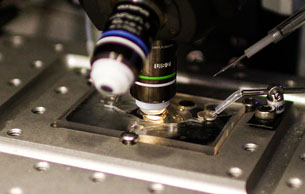Please note! This historical article concerns scientific dishonesty under the Danish rules applicable until 1 July 2017.
What is scientific dishonesty?
Under the Danish Act on the Research Advisory System, scientific dishonesty (now generally known as research misconduct) is defined as follows, cf. section 2(3) of the Danish Act on the Research Advisory System.
Falsification, fabrication, plagiarism and other serious violation of good scientific practice committed wilfully or grossly negligently by planning, performing or reporting of research results.
Scientific dishonesty thus implies a serious breach of good scientific practice which was committed intentionally or grossly negligently.
The three main examples of scientific dishonesty in this definition – falsification, fabrication and plagiarism – are also used internationally and are often referred to as ”FFP”. Scientific dishonesty is not limited to the above.
Cases of scientific dishonesty that are central for Danish research can be taken up by the Danish Committees on Scientific Dishonesty (DCSD).
A historical review of the concept of dishonesty in Denmark may be found in the DCSD’s ruling of 18 December 2013 on manipulation of graphical material (case no. 1), cf. section 7.1.
In the Eastern High Court’s ruling of 18 February 2015 (the Klarlund case) the court states, among other things, the following about the concept of dishonesty:
“On the basis of this, the High Court finds that since 1992 scientific dishonesty has been characterised by conscious – or bordering on grossly negligent – breach of the basic requirements for scientific research. Moreover, the High Court finds on the same basis that the scope of scientific dishonesty includes cases where it is relatively clear that it must be taken into account that the researcher in question acted intentionally or with gross negligence in connection with falsifying or distorting the scientific message. The serious adverse effect on a scientist’s reputation and thus on the scientist’s future research possibilities, if the researcher should be deemed to have acted in a scientifically dishonest manner, speaks equally in favour of this, in the opinion of the High Court. This view is supported by the legislative history to section 2(3) of the Act on Research Consultancy, etc., as amended by Act no. 552 of 17 June 2008, referring to aligning the proposed scheme with the corresponding Norwegian model, cf. as stated above under the Legal Basis of section 5 of the Norwegian Act on Research Ethics and its explanatory notes. The explanatory notes state, among other things, that there are “strict requirements of guilt in order for the Committee to make a ruling of dishonesty”.”
In the same ruling, the Eastern High Court emphasises that the concept of dishonesty to be applied is the one which was applicable at the time of submission or publication of an article.
A similar view underlies the ruling of the Western High Court of 30 March 2016 in the Helmuth Nyborg case.
Examples
Scientific dishonesty includes the following, cf. section 2 of the DCSD Executive Order
Undisclosed fabrication and construction of data or substitution with fictitious data
Cf. recent practice:
- DCSD ruling of 18 December 2013 on manipulation of graphical material (case no. 1): The attempted disguise of the reuse of the same images by means of image manipulation was found to be equivalent to undisclosed fabrication and construction of data or substitution with fictitious data.
- DCSD ruling of 28 October 2013 (the Helmuth Nyborg case): A reference to UN data was misleading to the reader of the article as this reference was used to support data which did not clearly appear from the source that had been referred to. This source was central for the findings in the article. The committee found that this constituted a serious breach of good scientific practice which was equated with “undisclosed fabrication and construction of data or substitution with fictitious data”. The DCSD found that the respondent had acted with at least gross negligence – and added that the respondent had not subsequently supplied another reference where those figures might be found.
- This decision was brought before the Western High Court, which in its judgement of 30 March 2016 stated that Helmuth Nyborg was not guilty of research misconduct as stated in the decision of 28 October 2013.
- DCSD ruling of 29 August 2012 (count): The method which, according to the respondent’s statements to the DCSD, had actually been applied was not indicated in the method description in the submitted manuscript. The DCSD found that the respondent had thereby given misleading and erroneous information about the methods which she had used. The DCSD based its ruling on the fact that this – along with misrepresentations about two students’ contributions to the defendant’s manuscript – constituted a serious breach of good scientific practice, which was committed with gross negligence, and thus constituted scientific dishonesty.
- DCSD ruling of 29 August 2012 (mice): The DCSD found that the description of the used groups of mice in a health science article was “unusually vague” and that parts of the description could not possibly be correct. In the DCSD’s opinion, not all of the mice specified in the article had actually been used. The respondent had thus provided misleading and inaccurate information about the material used in the study, and about the type of groups of mice used in the study, as well as about the subsequent merger of the groups. The DCSD found that this was a serious breach of good scientific practice, which was committed intentionally, and thus constituted scientific dishonesty.
- DCSD ruling of 7 June 2012 (health economics): In an article, the authors had made use of a cost category that was not found in the referenced source material. The DCSD found that this could not be equated with construction of data as defined in the DCSD Executive Order, but that it was objectively an incomplete and misleading account of the cost categories used in the study. However, this did not constitute a serious breach of good scientific practice, but was a question of the quality of research, which it does not lie within the remit of the DCSD to consider.
Undisclosed selective or surreptitious discarding of own undesirable results
Undisclosed unusual and misleading use of statistical methods
Cf. recent practice:
- DCSD ruling of 18 December 2013 relating to deficiencies in the methodology description, etc. (case no. 2): Essential information on the test subjects was not included in the methodology section due to an error in the editing process. This was a serious breach of good scientific practice which DCSD, however, did not consider an act of gross negligence, and therefore found that this was not a case of scientific dishonesty.
Undisclosed biased or distorted interpretation of own results and conclusions
Plagiarism of another person’s results or publications
For more information about plagiarism, please refer to the article on plagiarism, credits and good citation practice.
False statements concerning authorship, title or workplace
Cf. recent practice:
- DCSD ruling of 28 October 2013:DCSD concluded that a non-credited writer (“X”) had provided significant contributions to an article for which the respondent had claimed authorship. X had declined co-authorship. DCSD found that the respondent thus wrongfully appeared to be the sole author of the article and that X’s significant contributions to the article were concealed from the reader. DCSD pointed out that X could have been mentioned in other ways, for example by reference or listed in the acknowledgments. A majority (four of the committee members) found that the respondent had committed a serious breach of good scientific practice, and that this breach was deliberate, i.e. that the respondent had committed scientific dishonesty. A minority (two of the committee members) agreed with the majority that the respondent should have made clear X’s participation in the contribution of data, but found, after having assessed the case in its entirety, that the failure to cite X could not be characterised as a serious breach of good scientific practice.
- This ruling was brought before the Western High Court, which in its judgement of 30 March 2016 found that Helmuth Nyborg was not guilty of scientific dishonesty as stated in the ruling of 28 October 2013.
Submission of incorrect information about scientific qualifications
See also the articles on publication and dissemination and freedom of expression.
Responsibility
For more information about authors’ responsibility for compliance with good scientific practice, please refer to the article on authorship.
See also
- Good Scientific Practice
- The Danish Committees on Scientific Dishonesty (DCSD)
- Publication
- Dissemination and freedom of expression
- Plagiarism, credits and good citation practice
- Danish Act on the Research Advisory System.
- Executive Order on the Danish Committees on Scientific Dishonesty
- DCSD rulings and annual reports


